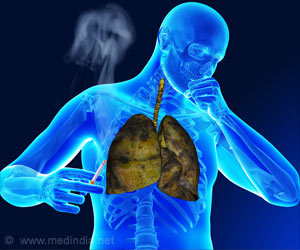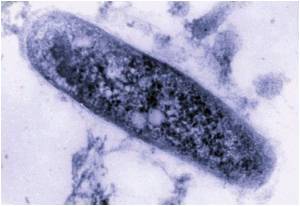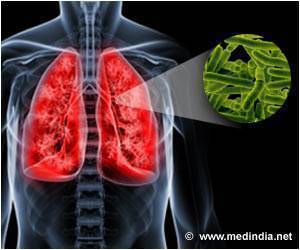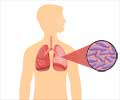The childhood tuberculosis epidemic is likely to be much higher because TB in children is often missed due to non-specific symptoms and difficulties in diagnosis.

‘Integrating pediatric TB program with other programs like Maternal and Child Health, could help find many children with undiagnosed TB.
’





"Children are central to where we are heading for in TB control. If we aim to end TB in the next 20 years we should know the trends in infection and disease in the pediatric population and amend it," said Dr Jennifer Furin of Harvard Medical School, at a session in International TB Conference (TB 2016) - a two-day conference dedicated exclusively to this infectious disease - that immediately preceded the 21st International AIDS Conference (AIDS 2016) being currently held in port city of Durban. The World Health Organization (WHO) estimates that nearly 1 million children get infected with TB and more than 30,000 children become sick every year with multidrug-resistant TB (MDR-TB).Unbelievable but True: Children Not Our Primary Focus
Dr Furin expressed her outrage for very little attention being paid to but they are not. We are practicing the trickle down effect in pediatric TB. We assume that whatever good is happening for adults will somehow make it down for children. But there is a wide gap between our expectations and the ground reality,” she said.
Some of the current gaps in pediatric TB care Dr Furin pointed out are lack of - point-of-care test on easily accessible samples; sensitive screening tools; effective, nontoxic TB treatment; all oral short course potent regimens for all forms of TB; pediatric formulations and family-centered approach.
According to her there are three main priority areas we need to focus on:
- Establish long-term family cohorts that are followed for 20 years or so.
- Establish rapid epidemic response protocols, especially in larger MDR-TB outbreak settings (like Papua New Guinea (PNG) where 1% of the population is sick with MDR-TB) and in smaller settings with high number of exposed children (like creches and orphanages).
- Commit to childhood TB as an essential part of ‘End TB’ strategy.
Advertisement
But in this dismal scenario, there are small sparks of hope too. The Global Alliance for TB Drug Development (TB Alliance) has played a vital role in not only developing pediatric fixed-dose combinations (FDCs) for treating drug-sensitive TB, but also advocating for their use, in getting national guidelines changed and switching the market from old to the new. Vijay Agarwal of Macleods Pharmaceuticals Ltd, an Indian generic drug manufacturing company informed that they have started manufacturing and supplying the FDCs of Rifampicin 75mg + Isoniazid 50mg and Rifampicin 75mg + Isoniazid 50mg + Pyrazinamide 150mg.
Advertisement
Unfortunately, India, where these drugs are being produced, has yet to roll them out. The company was expecting to get a purchase order from the RNTCP this month and would be able to deliver supplies within two months of getting the order. To begin with, the Indian government is expected to roll out these FDCs for HIV co-infected pediatric TB patients in 5 states (Haryana, Tamil Nadu, West Bengal, Assam, Andhra Pradesh).
Shorter Drug Regimen for Children and Adolescents
Another good news shared by Bassirou Souleymane of Damien Foundation with CNS (Citizen News Service) was the encouraging results obtained for children who were part of an observational study launched in 2013 in 9 countries of Africa to determine effectiveness and tolerance of a modified Bangladesh regimen for MDR-TB. Out of the 58 children and adolescents aged less than18 years started on this regimen, 47 were recruited early enough for cohort analysis - 9 of them being HIV positive. The overall treatment success rate was 83%. Also, all adverse drug events were mild to moderate.
“Treatment results of the Bangladesh regimen appear excellent in children and adolescents, including in HIV-infected patients. Adverse drug events were not frequent, and all were mild. But as the sample size was small, more studies are needed. These results should encourage to apply the short regimen to children and adolescents,” said Souleymane.
Integrating pediatric TB program with programs like Maternal and Child Health, could help find lot many kids with undiagnosed TB. So healthcare facilities where children go for vaccinations, deworming and for sickness like pneumonia, malnutrition, provide a good and cost saving opportunity for screening them for TB.
Dr John Ditekemena of Elizabeth Glaser Pediatric AIDS Foundation spoke about the challenge of addressing the wide policy-practice gap and the need to scale up of new tools - GeneXpert and new pediatric FDCs. He advocated for a community health approach to bring health information and basic services to the people. Community has to be involved in TB management by reinforcing capacities of community members to handle TB related issues in children like active case finding, index case finding and contact tracing.
Time to Act is Now
It is our moral obligation to protect our children. No child should get TB, and no child should die of it. What we need is a strategy and not empty talks. Merely signing on the dotted line is just not enough. There has to be the political will to transform words into action.
Source: Shobha Shukla, CNS (Citizen News Service)














